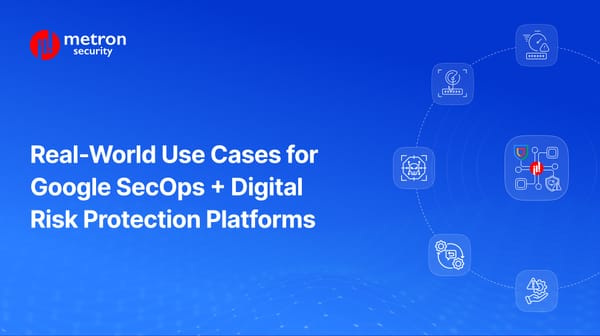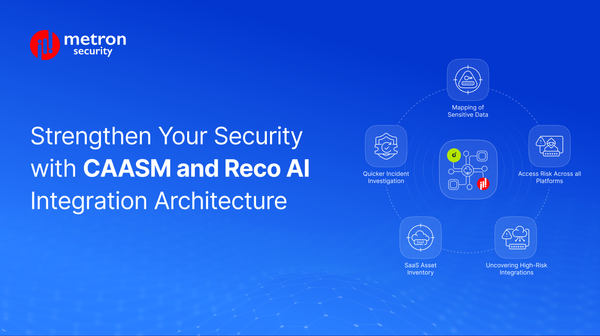Guide to ServiceNow Vulnerability Response and its Use Cases
Take a closer look at ServiceNow Vulnerability Response and its key use cases.
Anmol Jain

Understanding the Role of Vulnerability Response
Vulnerability response is a critical aspect of cybersecurity that involves identifying, assessing, and mitigating vulnerabilities in an organization's systems. As security operations platforms, these tools typically offer a proactive approach to prevent potential security breaches and protect sensitive data.
One of the most widely used vulnerability response tools is found within the wider ServiceNow suite (and aptly called ServiceNow Vulnerability Response). In the following post, we’ll take a closer look at this platform along with several of its key use cases.
Vulnerability Response and its Use Cases
ServiceNow offers a comprehensive vulnerability response solution that can be tailored to meet the specific needs of cybersecurity integration providers.
- Streamlined Vulnerability Management Workflow:
- Centralized Vulnerability Database: ServiceNow can consolidate vulnerability data from multiple sources, providing a unified view for efficient management.
- Automated Patch Management: By integrating with patch management systems, ServiceNow can automate the process of applying patches to vulnerable systems, reducing the risk of exploitation.
- Prioritization based on Risk: ServiceNow can help prioritize vulnerabilities based on factors like severity, impact, and likelihood of exploitation, ensuring that resources are allocated effectively.
For example: If your organization uses a third-party vulnerability scanner platform, ServiceNow can be integrated with this platform to automatically import vulnerability data, allowing streamlined vulnerability assessment, prioritization, and remediation.
- Enhanced Incident Response Coordination:
- Automated Incident Creation: When a vulnerability is discovered, ServiceNow can automatically create an incident record, triggering a predefined workflow for incident response.
- Communication and Collaboration: ServiceNow's collaboration features enable effective communication between security teams, SOC Analysts, and other stakeholders involved in incident response.
- Knowledge Base and Best Practices: ServiceNow can store and share knowledge articles and best practices for incident response, improving efficiency and consistency.
For example: When a new vulnerability is discovered, ServiceNow can automatically create an incident, assign it to the appropriate team, and provide access to relevant knowledge articles and best practices.
- Compliance Management and Reporting:
- Regulatory Compliance: ServiceNow can help organizations comply with various security regulations, such as GDPR, HIPAA, and PCI DSS, by providing features for tracking and reporting on vulnerability remediation efforts.
- Audit Trails: ServiceNow's audit trails can capture a complete history of vulnerability management activities, providing evidence for audits and compliance reviews.
For example: ServiceNow's vulnerability response and management helps organizations track and manage vulnerabilities, ensuring compliance with regulations like GDPR. The audit trails in ServiceNow capture a history of vulnerability management activities, providing evidence for audits.
- Vendor Risk Management:
- Third-Party Vulnerability Assessment: ServiceNow can be used to assess the security posture of third-party vendors and suppliers, ensuring that they meet the organization's security standards.
- Contractual Obligations: ServiceNow can help track and manage contractual obligations related to vulnerability management, reducing the risk of legal and financial consequences.
For example: If you outsource part of your IT infrastructure to third-party vendors, ServiceNow can track and manage vendor security assessments, ensuring that vendors meet your organization's security standards.
- Integration with Cybersecurity Platforms:
- API Integration: ServiceNow offers robust APIs that allow for seamless integration with various cybersecurity platforms, such as endpoint protection, firewalls, and intrusion detection systems.
- Data Enrichment: Integrated data from cybersecurity platforms can enrich vulnerability records in ServiceNow, providing a more comprehensive understanding of the risk landscape.
For example: If your organization uses ServiceNow to integrate your firewall and endpoint protection platforms, when a new vulnerability is discovered, ServiceNow will gather additional information to assess the risk and prioritize remediation, ensuring a quick and effective response.
Summary of Features and Benefits
- Improved Efficiency: Automation and streamlined workflows reduce manual effort and improve overall efficiency.
- Enhanced Security: Proactive vulnerability management helps prevent breaches and protect sensitive data.
- Enhanced Customer Value: By offering vulnerability response capabilities as part of your integration services, your organization can deliver greater customer value.
- Compliance Adherence: ServiceNow helps organizations meet regulatory requirements and avoid penalties.
Conclusion
ServiceNow's vulnerability response solution offers a powerful platform for cybersecurity integration providers to manage vulnerabilities effectively, improve incident response, and ensure compliance.
By leveraging ServiceNow's capabilities, integration providers can deliver comprehensive security solutions that meet the evolving needs of their customers.
Is your organization looking to set up any integrations with ServiceNow or having trouble connecting security apps with its infrastructure? For any queries or integration needs of your business, concerning cybersecurity platforms, please feel free to reach out to us at connect@metronlabs.com.









